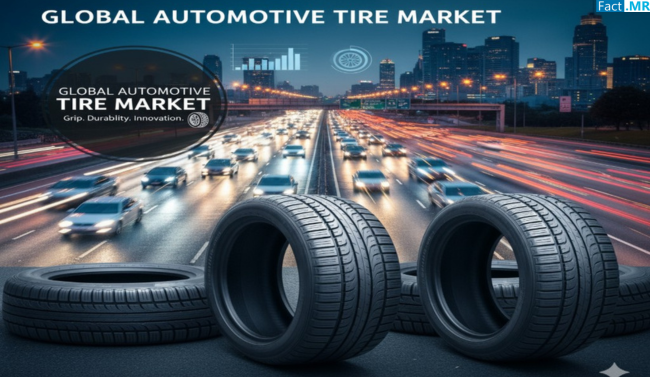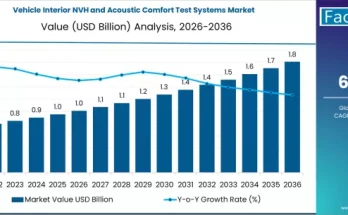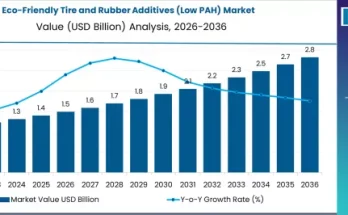Automotive tires are fundamental components of vehicles, providing traction, stability, and comfort while absorbing road vibrations. With the global automotive industry expanding rapidly, the demand for high-performance, eco-friendly, and durable tires is increasing across passenger cars, commercial vehicles, and electric vehicles. The automotive tire market is evolving to meet the needs of a growing vehicle fleet and the changing preferences of consumers for sustainable mobility solutions.
Market Overview:
Automotive tires are primarily made from rubber and reinforced with materials such as cloth, steel, and carbon black. Their primary functions include protecting the wheel rim, ensuring road grip, and acting as flexible cushions to absorb stress and shocks. The market growth is fueled by rising vehicle production, technological advancements, and consumer demand for better performance, fuel efficiency, and durability.
The industry caters to various tire types, including radial, tubeless, bias, winter, summer, and all-season tires, each designed for specific driving conditions and vehicle types. Innovation in tire technology focuses on reducing rolling resistance, enhancing safety, and supporting electric and autonomous vehicles.
Regional Insights:
North America is a leading market for automotive tires, driven by high vehicle production, technological adoption, and a strong focus on green tires. The United States, in particular, sees rising demand for electric vehicle tires and sustainable products like retreaded tires.
Europe emphasizes regulatory compliance and eco-friendly tire production. Stringent CO2 emission regulations and fuel-efficiency standards encourage the adoption of tires made with sustainable materials and low rolling resistance.
Asia-Pacific is emerging as a major market, led by countries like China, Japan, and India. Increasing vehicle ownership, infrastructure development, and rising consumer spending on high-performance and stylish tires contribute to market expansion.
Key Market Trends:
- Growing adoption of eco-friendly tires using bio-based rubber and renewable materials.
- Increased development of tires optimized for electric and autonomous vehicles.
- Rising preference for high-performance tires offering enhanced grip, durability, and fuel efficiency.
- Expansion of aftermarket and retreaded tire segments due to longer vehicle lifespans and improved road conditions.
- Investment in advanced tire technologies, including airless and non-pneumatic tires.
Applications & End-Use Outlook:
Passenger Vehicles: Tires for cars, SUVs, and luxury vehicles are designed for safety, comfort, and performance. Consumers are increasingly choosing tires that enhance fuel efficiency and reduce environmental impact.
Commercial Vehicles: Trucks and buses require durable tires capable of handling heavy loads and long-distance travel. Tires for commercial use focus on strength, longevity, and cost efficiency.
Electric Vehicles (EVs): EVs require specialized tires with low rolling resistance to maximize battery efficiency. Manufacturers are developing lightweight, high-performance tires specifically for EV applications.
Aftermarket: The growing number of vehicles on the road increases demand for replacement tires. Retreaded and high-quality aftermarket tires contribute to sustainability while offering cost savings.
Challenges Facing Market Growth:
The automotive tire market faces challenges, including dependency on natural rubber and fluctuations in raw material prices. Natural rubber supply shortages and price volatility can affect tire production costs and profit margins. Additionally, increasing competition and the need for continuous technological innovation put pressure on manufacturers.
Opportunities for Manufacturers:
Manufacturers are capitalizing on eco-friendly tire technologies, retreading, and sustainable production methods. By using bio-oil, plant-based synthetic rubber, and innovative designs, tire makers are reducing environmental impact while meeting regulatory requirements. Improved road infrastructure and increased vehicle longevity also create opportunities in the aftermarket segment.
Country-Wise Insights:
United States: The U.S. market is driven by rising vehicle production, high demand for green tires, and the growing adoption of EVs. Autonomous vehicles and consumer preference for pickup trucks further influence tire sales.
China: Growing demand for airless and non-pneumatic tires, combined with consumer focus on cost-effective, durable, and high-performance options, fuels market expansion. Technological innovation in tire design enhances passenger comfort and safety.
India: Rapid vehicle ownership growth, infrastructure development, and increased focus on sustainable mobility drive the demand for high-quality automotive tires.
Future Outlook:
The automotive tire market is expected to witness steady growth over the next decade, driven by rising vehicle sales, technological advancements, and sustainability trends. Manufacturers investing in research and development, eco-friendly materials, and high-performance tire technologies are well-positioned to capture market opportunities.
Conclusion:
Automotive tires remain a crucial component in modern mobility, combining performance, safety, and sustainability. As the automotive industry evolves with electric and autonomous vehicles, the tire market adapts with innovative solutions for durability, efficiency, and environmental impact. Companies focusing on technological innovation, eco-friendly materials, and consumer-centric designs will shape the future of the automotive tire industry, supporting a greener and more efficient transportation ecosystem.



